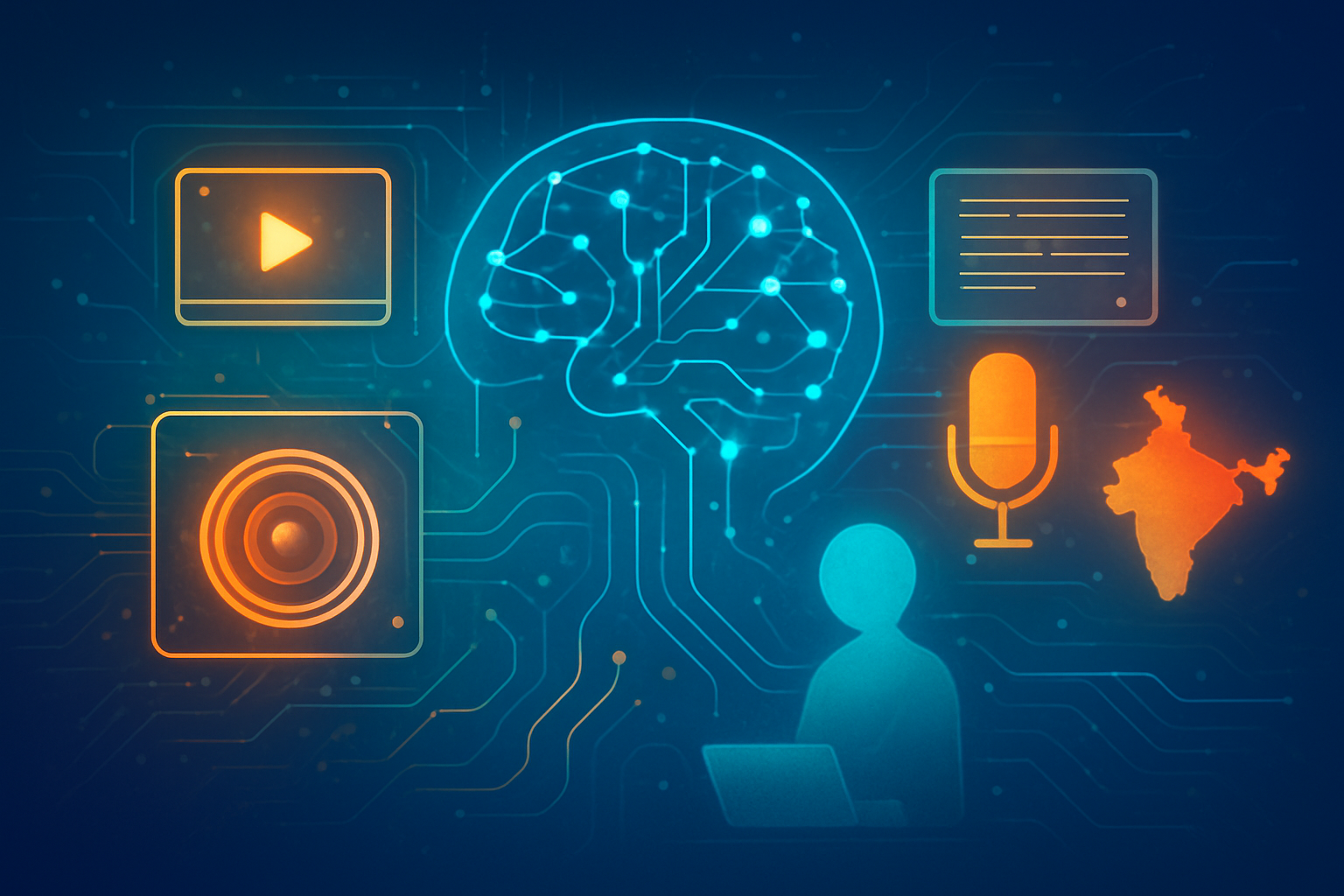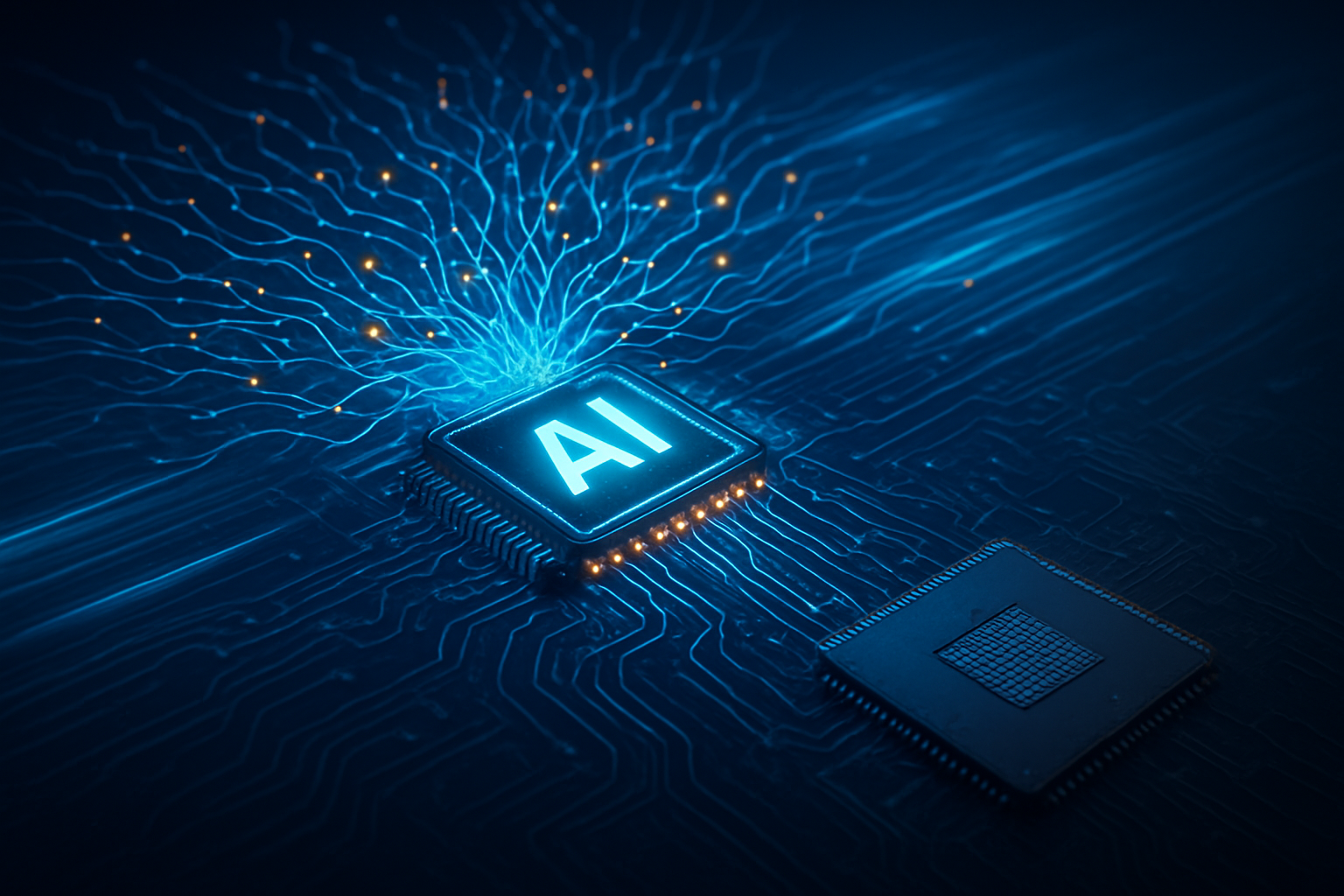New Delhi, India – November 17, 2025 – YouTube, a subsidiary of Alphabet (NASDAQ: GOOGL), today unveiled a sweeping array of AI-powered tools and strategic partnerships in India, signaling a transformative era for content creation and education within the nation. Announced at the annual YouTube Impact Summit, these initiatives are poised to democratize access to advanced creative technologies, enhance learning experiences, and significantly bolster India's burgeoning digital economy. The move underscores YouTube's deep commitment to nurturing local talent and leveraging artificial intelligence to connect a vast and diverse audience with credible information and innovative storytelling.
The comprehensive rollout of these AI-driven features and collaborations represents a pivotal moment, aiming to empower millions of Indian creators and learners. From sophisticated video editing automation to advanced educational programs and real-time conversational AI, YouTube is embedding artificial intelligence at the core of its platform to foster digital well-being, protect intellectual property, and cultivate a vibrant ecosystem where creativity and knowledge can flourish on an unprecedented scale.
Technical Leaps: AI's New Frontier in Content and Learning
YouTube's latest advancements showcase a significant leap in applying generative AI to practical content creation and educational delivery. At the forefront of these innovations is the "Edit with AI" feature, now universally available to creators in India through the YouTube Create app. This tool intelligently processes raw footage, generating a compelling first draft, complete with music, transitions, and even AI-generated voice-overs in English and Hindi, offering culturally resonant styles like cricket commentary or shayari. This dramatically reduces editing time, making sophisticated production accessible to creators of all skill levels.
Further enhancing creative capabilities, YouTube has integrated a custom version of Google DeepMind's Veo 3 video generation model, dubbed Veo 3 Fast, specifically for YouTube Shorts. This powerful AI allows creators to generate video backgrounds, add sounds, and create short clips directly within the app with remarkable speed and 480p resolution. While initially rolled out in select Western markets in September 2025, its expansion plans include India, promising future capabilities such as transforming still photos into dynamic videos and inserting objects or characters via text prompts. Additionally, the Veo 3 model will empower podcasters to automatically generate engaging Shorts or video clips from their full-length audio episodes, even without original video recordings. To safeguard creators, a new Likeness Detection Technology, in open beta for YouTube Partner Program members, helps monitor and request the removal of unauthorized AI-altered videos using their facial likeness. On the commerce front, as of October 10, 2025, YouTube has expanded its AI-powered shopping tools for Indian creators, introducing an automated system that tags products in videos precisely when they are mentioned, optimizing viewer engagement and monetization opportunities. These tools collectively represent a departure from previous manual or less sophisticated AI-assisted processes, offering a more intuitive, powerful, and protective environment for creators.
Reshaping the Competitive Landscape: Who Benefits and How
These bold AI initiatives by YouTube (NASDAQ: GOOGL) are set to significantly reshape the competitive dynamics within the tech and media industries, particularly in India. The primary beneficiaries include YouTube itself, which solidifies its market leadership by offering cutting-edge tools that attract and retain creators. Google DeepMind, as the developer of the underlying Veo 3 technology, further validates its expertise in generative AI, potentially opening new avenues for licensing and integration across other Google products. Critically, millions of Indian content creators—from burgeoning artists to established educators—stand to gain immensely from the reduced barriers to entry, streamlined production workflows, and enhanced monetization options.
The competitive implications for major AI labs and tech companies are substantial. By integrating advanced generative AI directly into its creator ecosystem, YouTube sets a new benchmark that rivals like TikTok, Instagram Reels (Meta Platforms, Inc., NASDAQ: META), and other short-form video platforms will be compelled to match. This move could potentially disrupt third-party video editing software providers and content creation agencies, as many functions become automated and accessible directly within the YouTube platform. For startups focusing on AI tools for content creation, this presents both a challenge and an opportunity: while direct competition from YouTube is fierce, there's also potential for collaboration or for developing niche tools that complement YouTube's offerings. Strategically, YouTube is leveraging AI to deepen its moat, enhance user engagement, and expand its footprint in the creator economy, especially in high-growth markets like India, by providing an end-to-end solution for creation, distribution, and monetization.
Broader Implications: AI's Role in India's Knowledge Economy
YouTube's AI initiatives in India fit squarely within the broader global trend of generative AI's integration into everyday applications, while simultaneously highlighting the unique importance of localized technological solutions. These developments underscore AI's increasing role in democratizing access to complex creative and educational tools, moving beyond mere content recommendation to active content generation and personalized learning. The focus on Hindi language support and culturally specific voice-over options like shayari and cricket commentary demonstrates a sophisticated understanding of the Indian market, setting a precedent for how AI can be tailored to diverse linguistic and cultural contexts.
The impacts are far-reaching. In content creation, AI promises to unleash a new wave of creativity, enabling more individuals to become creators by lowering technical hurdles and reducing production costs. For education, the partnerships with the Indian Institute of Creative Technologies (IICT) and the All India Institute of Medical Sciences (AIIMS) represent a significant step towards enhancing India's "knowledge economy." By making professional nursing courses available online and training students for the AVGC-XR industries using AI, YouTube is directly contributing to skill development and preparing the workforce for future AI-driven careers. Potential concerns, however, include the ethical deployment of AI-generated content, the prevention of deepfakes (though addressed by likeness detection), and the potential for job displacement in traditional creative roles. Compared to previous AI milestones, which often focused on automation or analytics, these initiatives mark a shift towards AI as a collaborative partner in the creative and learning processes, emphasizing augmentation over mere automation.
The Road Ahead: Future Developments and Expert Predictions
Looking ahead, the integration of AI into content creation and education on platforms like YouTube is poised for rapid evolution. In the near term, we can expect further refinements and expansions of the Veo 3 Fast model, potentially offering higher resolutions, more intricate generative capabilities, and broader stylistic options for video creation. The conversational AI tool, currently in English, is slated for Hindi support soon, and its capabilities are likely to expand to offer more interactive and context-aware assistance, possibly even guiding users through complex tutorials or creative challenges. The Indian government's plan to integrate AI into its national curriculum from Class 3 by 2026-27 will create a fertile ground for AI literacy, making platforms like YouTube even more critical for delivering AI-powered educational content.
Longer-term developments could see hyper-personalized learning pathways, where AI tutors adapt content and teaching styles in real-time to individual student needs, potentially revolutionizing online education. For creators, AI might enable more sophisticated interactive content, where viewers can influence storylines or character development in real-time. Challenges that need to be addressed include ensuring the ethical use of AI, preventing the spread of misinformation through AI-generated content, bridging the digital divide to ensure equitable access to these powerful tools, and continuously innovating to stay ahead of misuse and technological stagnation. Experts predict a future where AI becomes an indispensable co-creator and co-educator, with platforms like YouTube leading the charge in making these advanced capabilities accessible to the masses, fundamentally altering how we learn, create, and interact with digital media.
A New Chapter for AI, Creativity, and Learning in India
YouTube's comprehensive suite of AI initiatives in India marks a profound moment in the intersection of artificial intelligence, content creation, and education. By rolling out advanced generative AI tools for creators and forging strategic partnerships with leading Indian institutions, YouTube is not merely enhancing its platform; it is actively shaping the future of digital literacy and economic opportunity in one of the world's most dynamic markets. The immediate availability of features like "Edit with AI" and the expansion of AI-powered shopping tools demonstrate a commitment to empowering creators, while collaborations with IICT and AIIMS underscore a dedication to fostering a robust knowledge economy.
This development is significant in AI history as it showcases a successful, large-scale deployment of sophisticated AI directly into the hands of millions of users in a culturally diverse and linguistically rich environment. It highlights the potential for AI to democratize creativity, make quality education more accessible, and drive economic growth. The long-term impact will likely see a more vibrant and diverse content landscape, a more skilled workforce, and a new paradigm for online learning. In the coming weeks and months, it will be crucial to watch the adoption rates of these new tools by creators, the measurable impact of the educational partnerships on student outcomes, and how YouTube continues to refine its AI offerings to address both creative potential and ethical considerations. This is more than just a technological upgrade; it's a foundational shift in how India, and by extension, the world, will engage with digital content and education.
This content is intended for informational purposes only and represents analysis of current AI developments.
TokenRing AI delivers enterprise-grade solutions for multi-agent AI workflow orchestration, AI-powered development tools, and seamless remote collaboration platforms.
For more information, visit https://www.tokenring.ai/.









